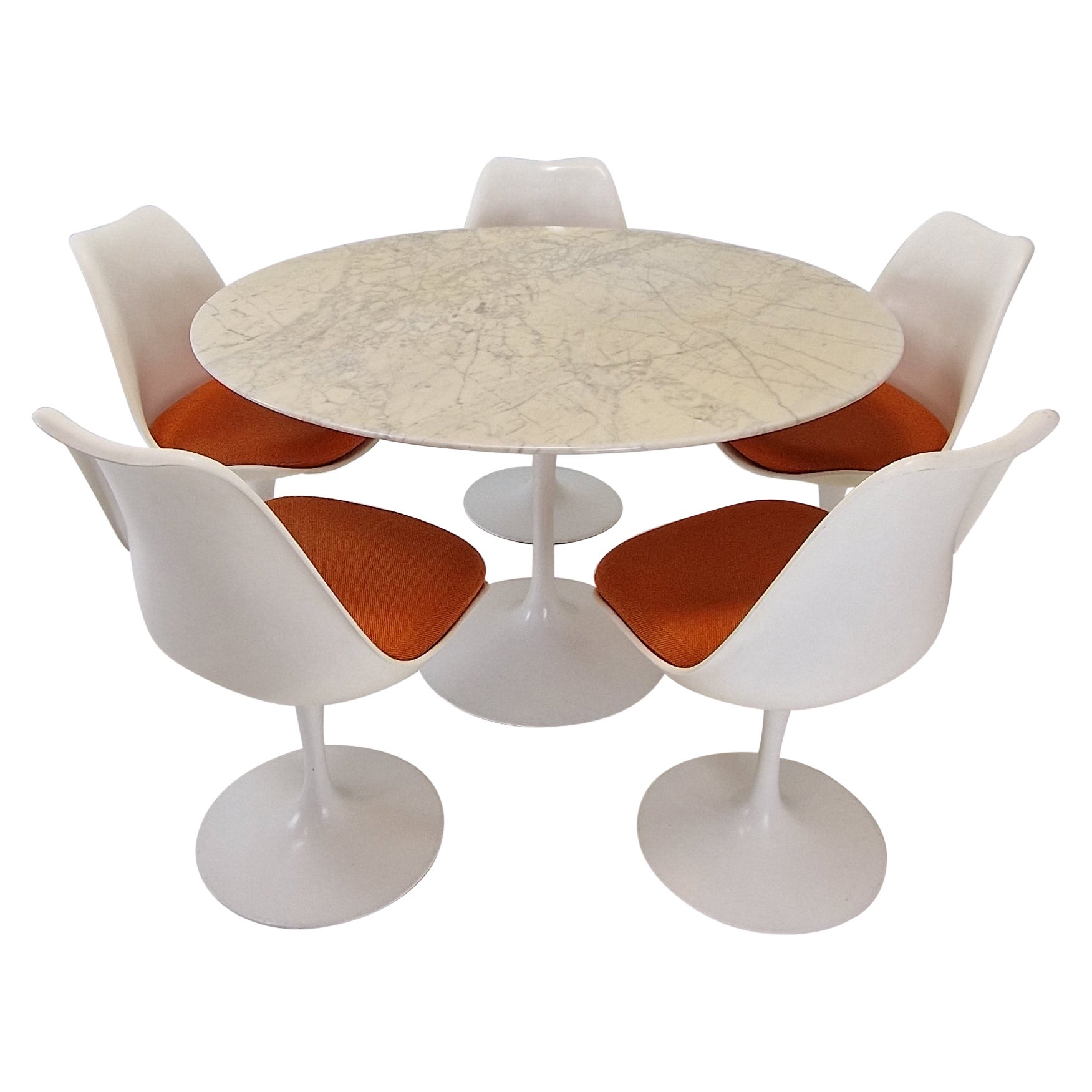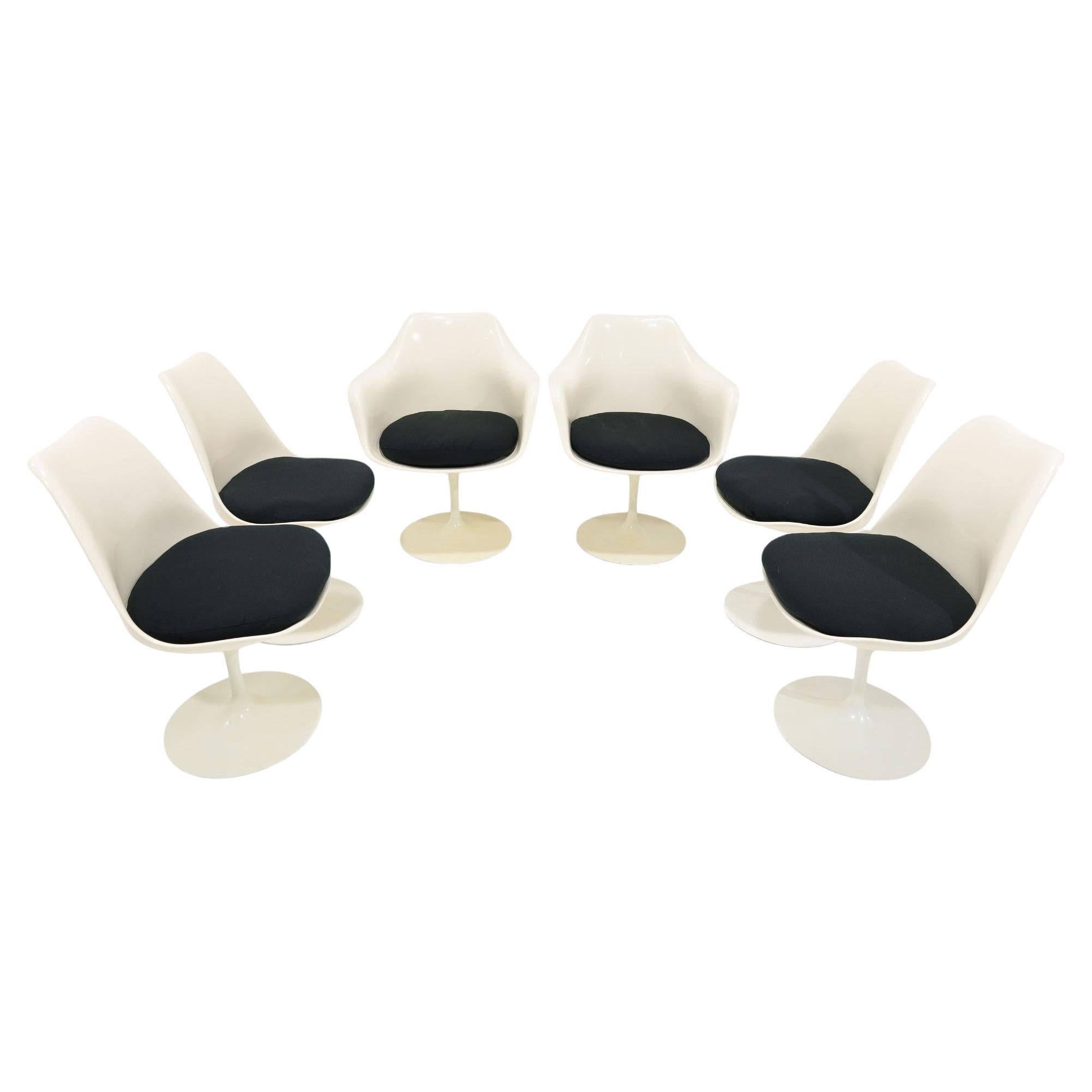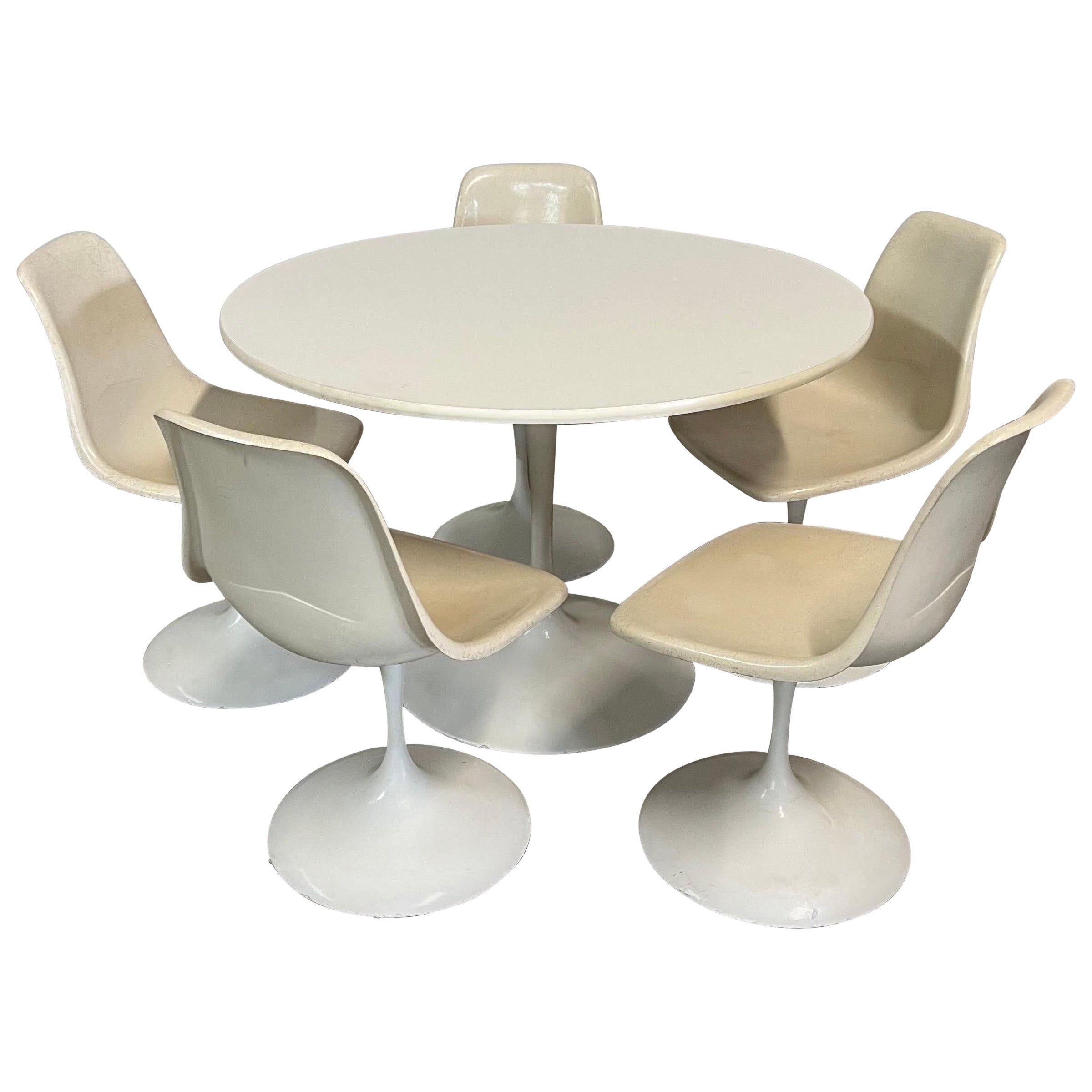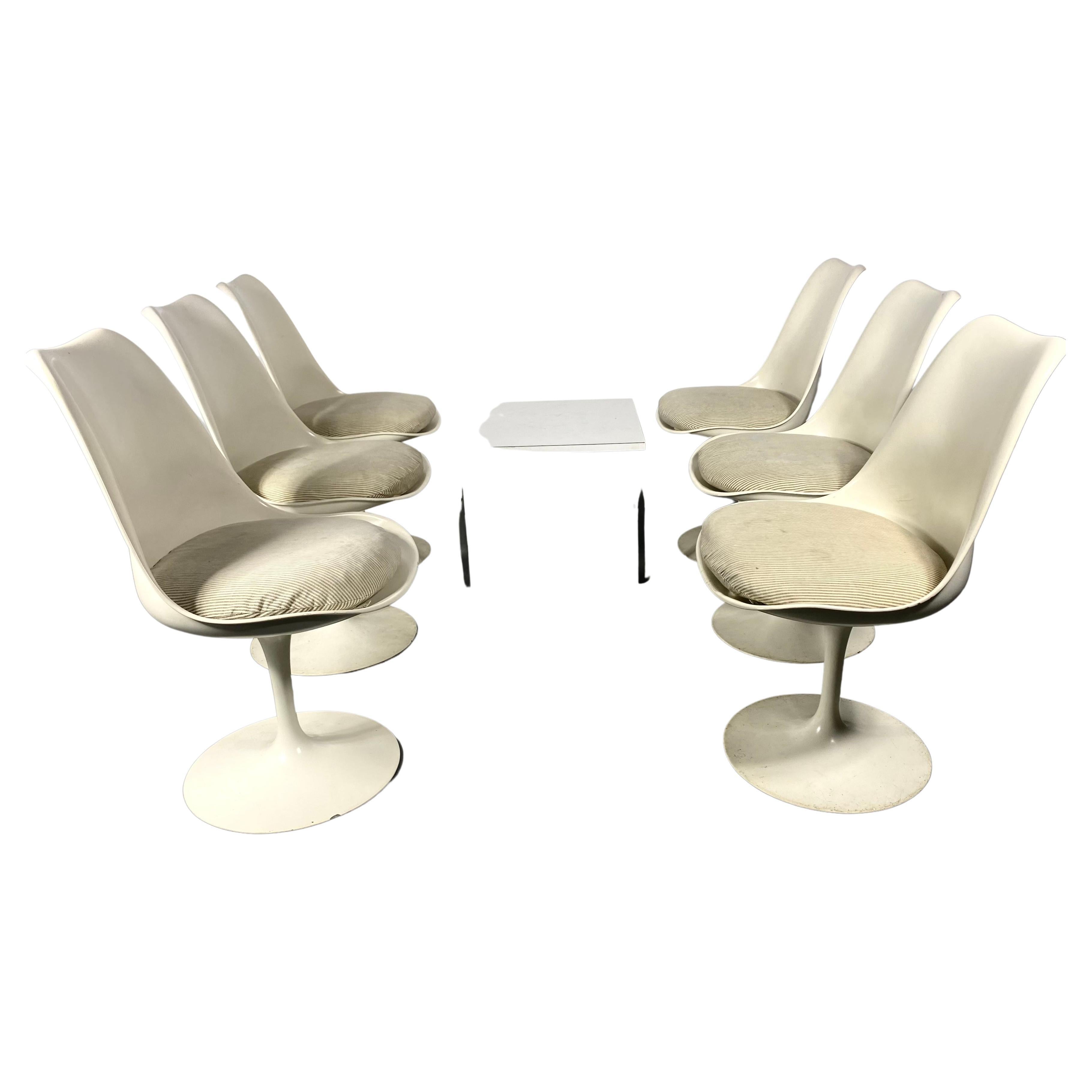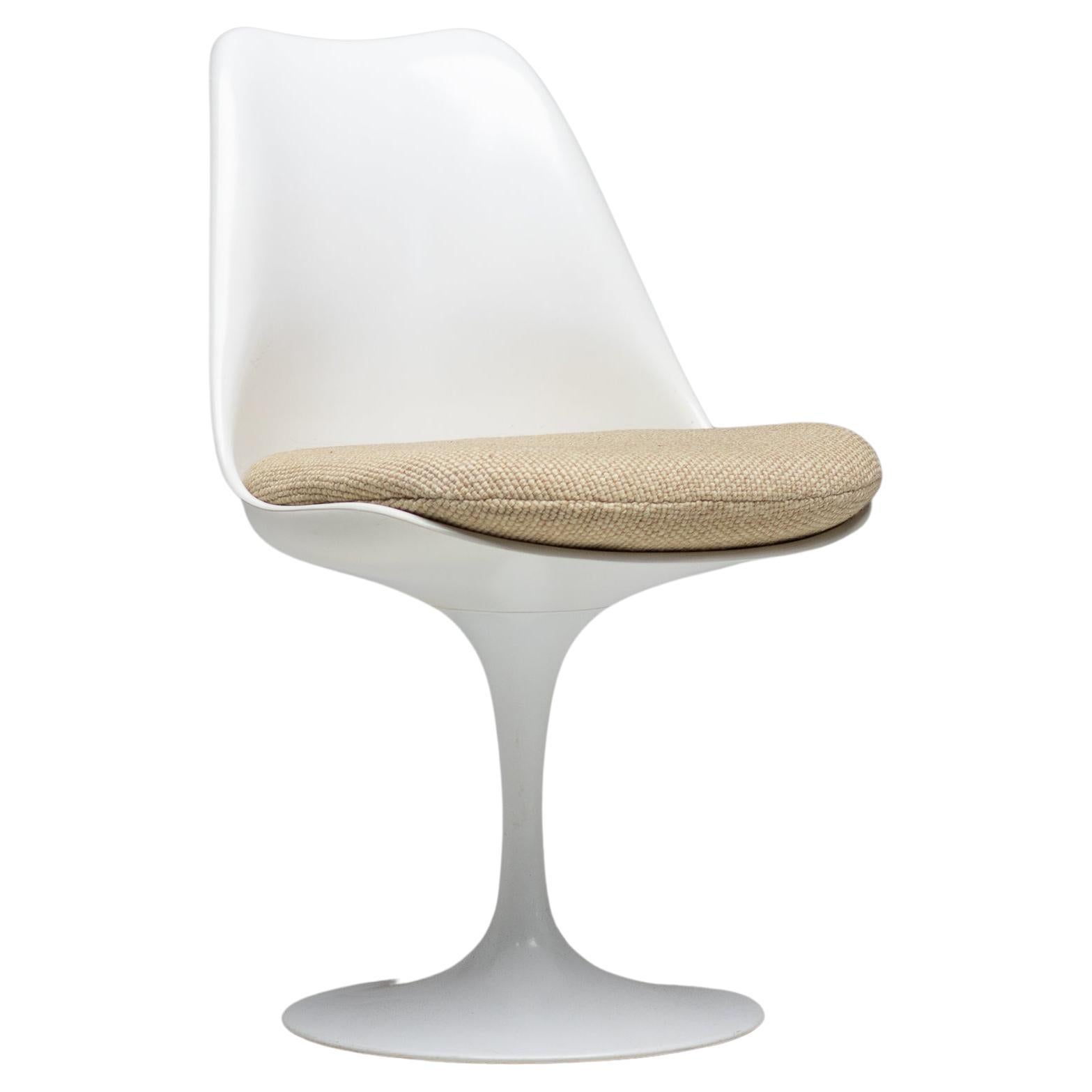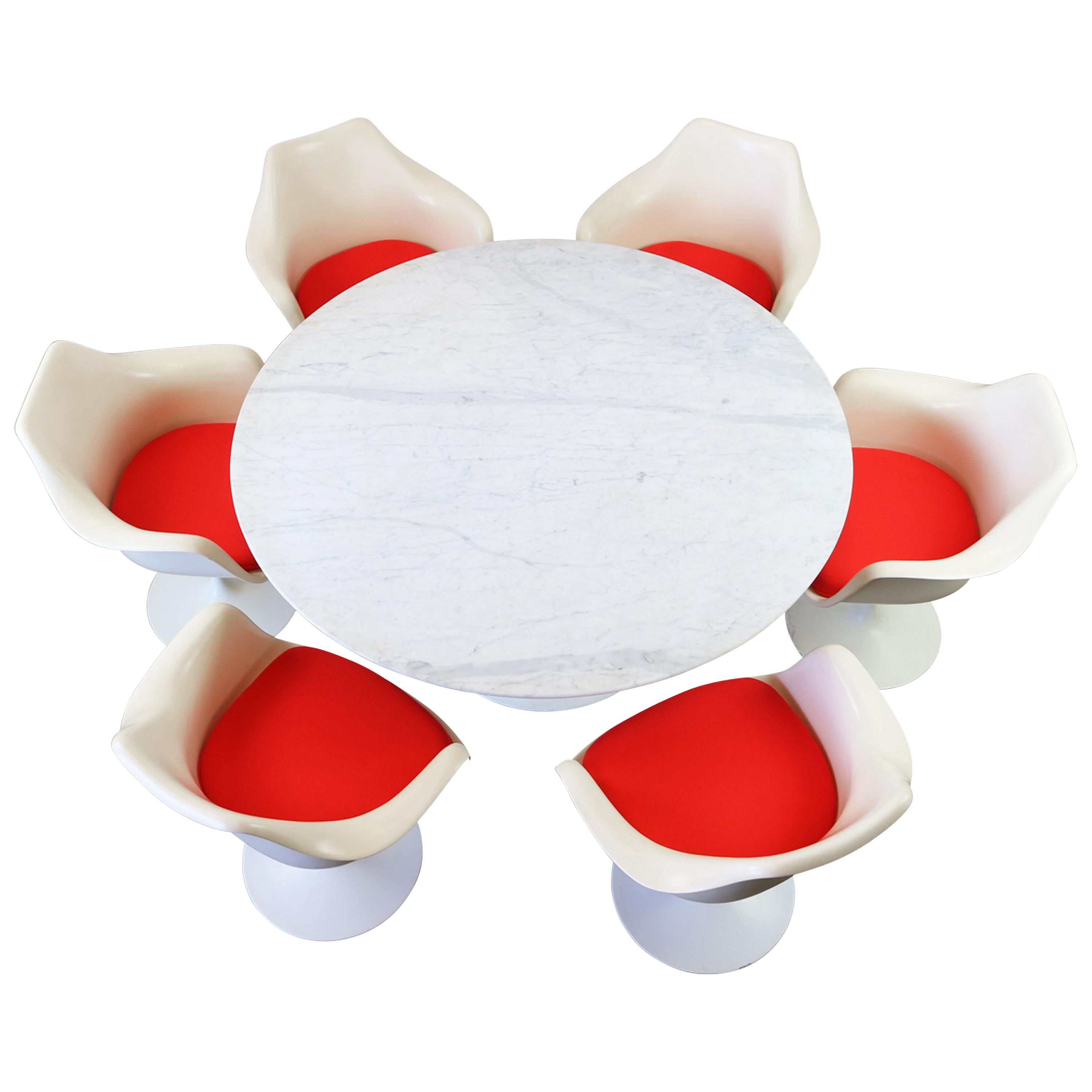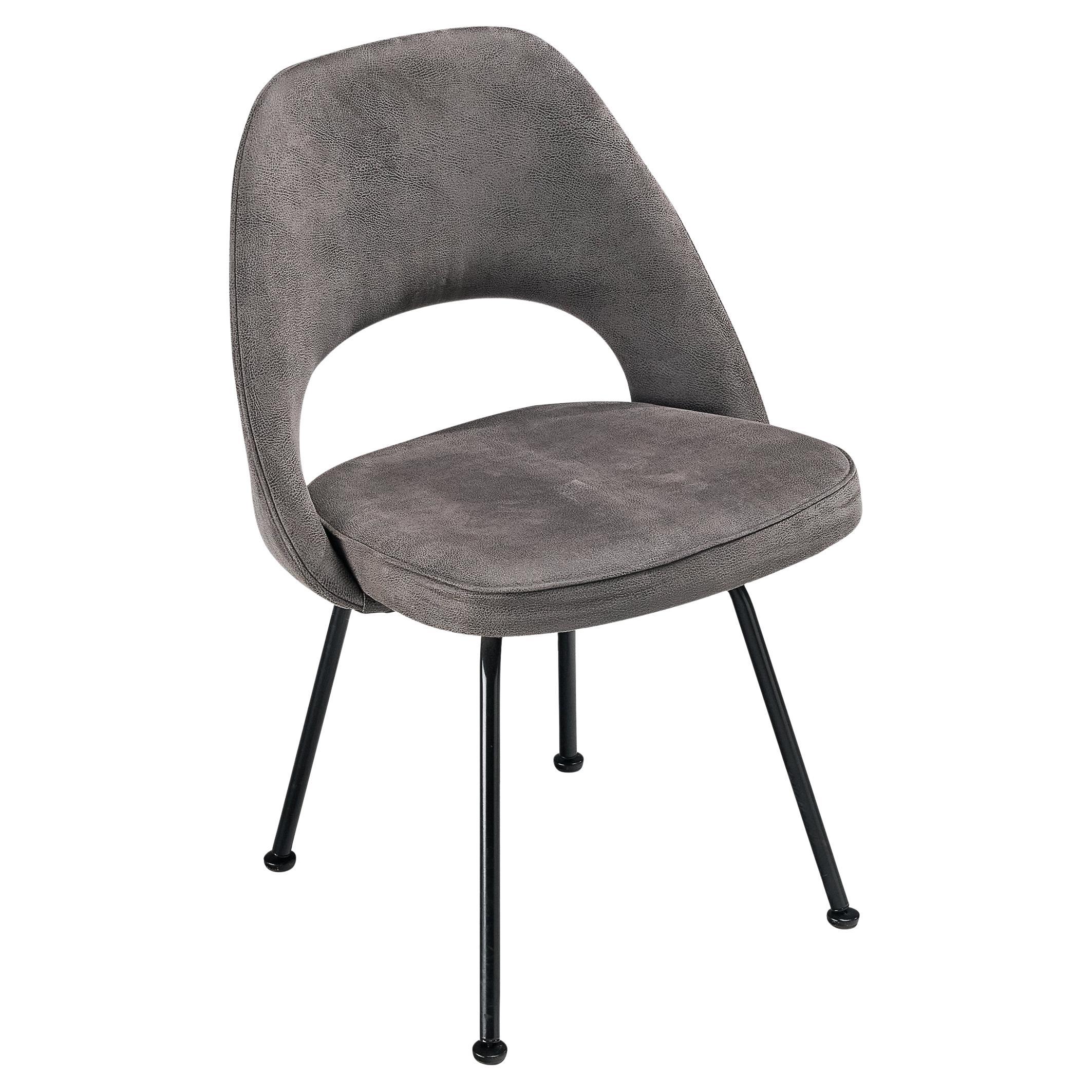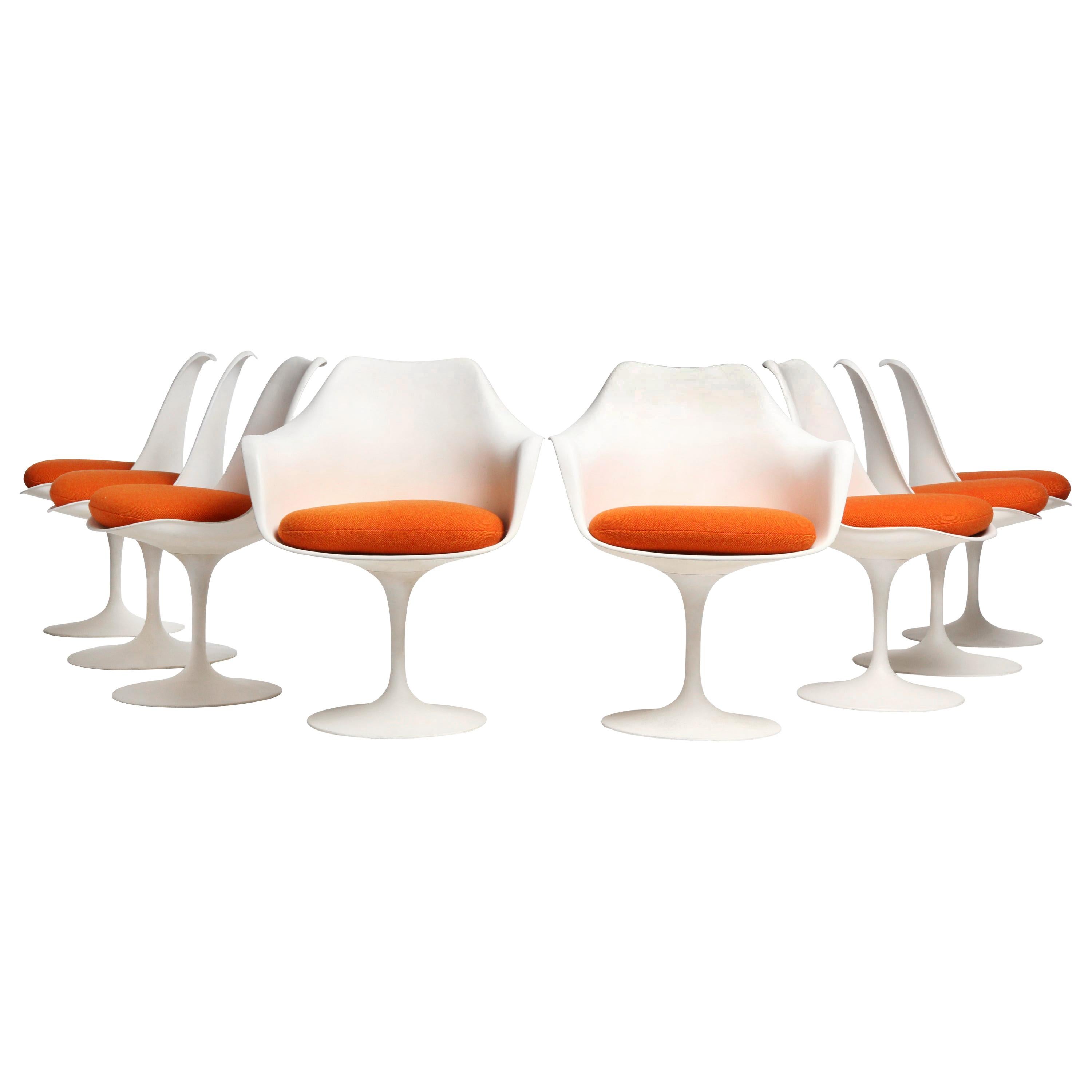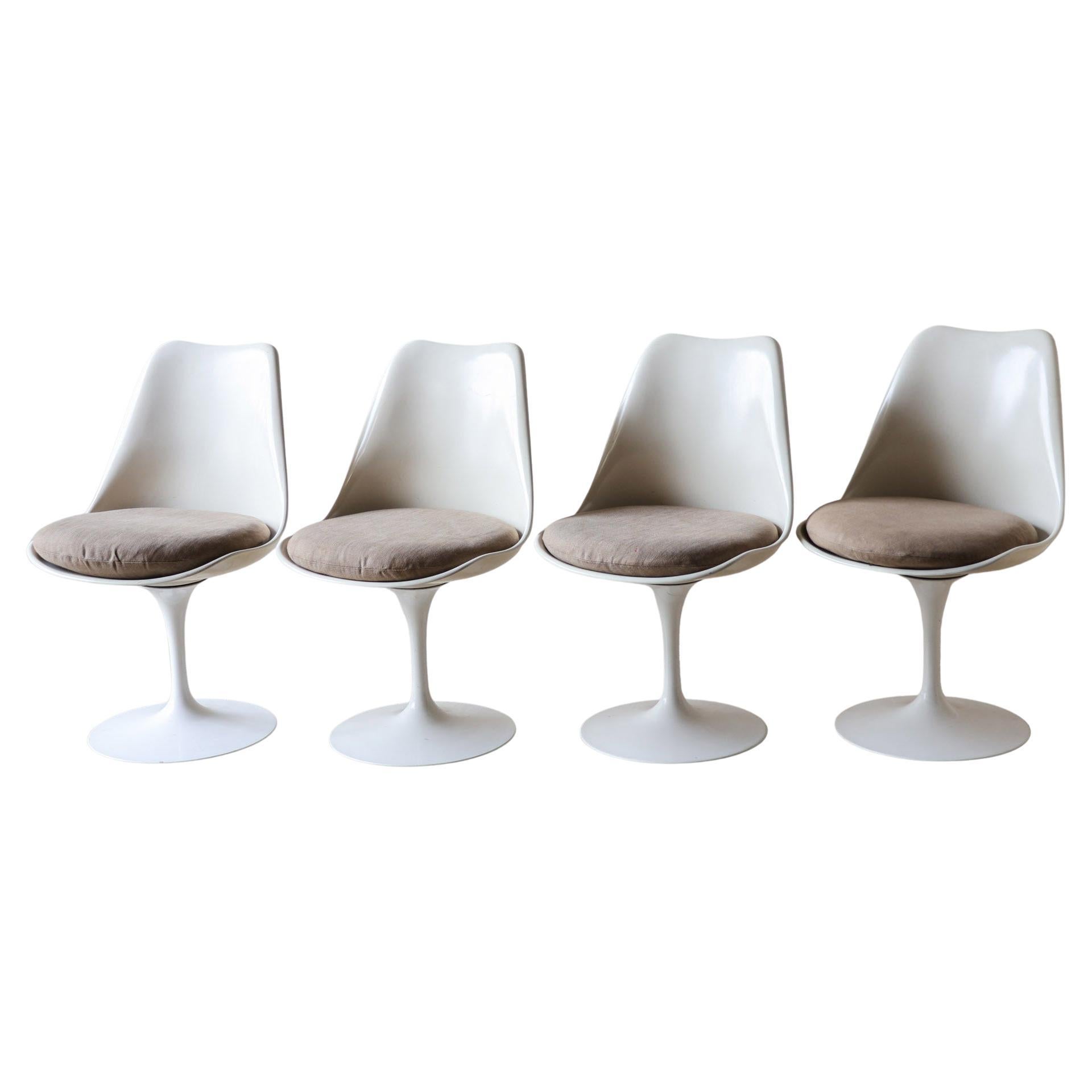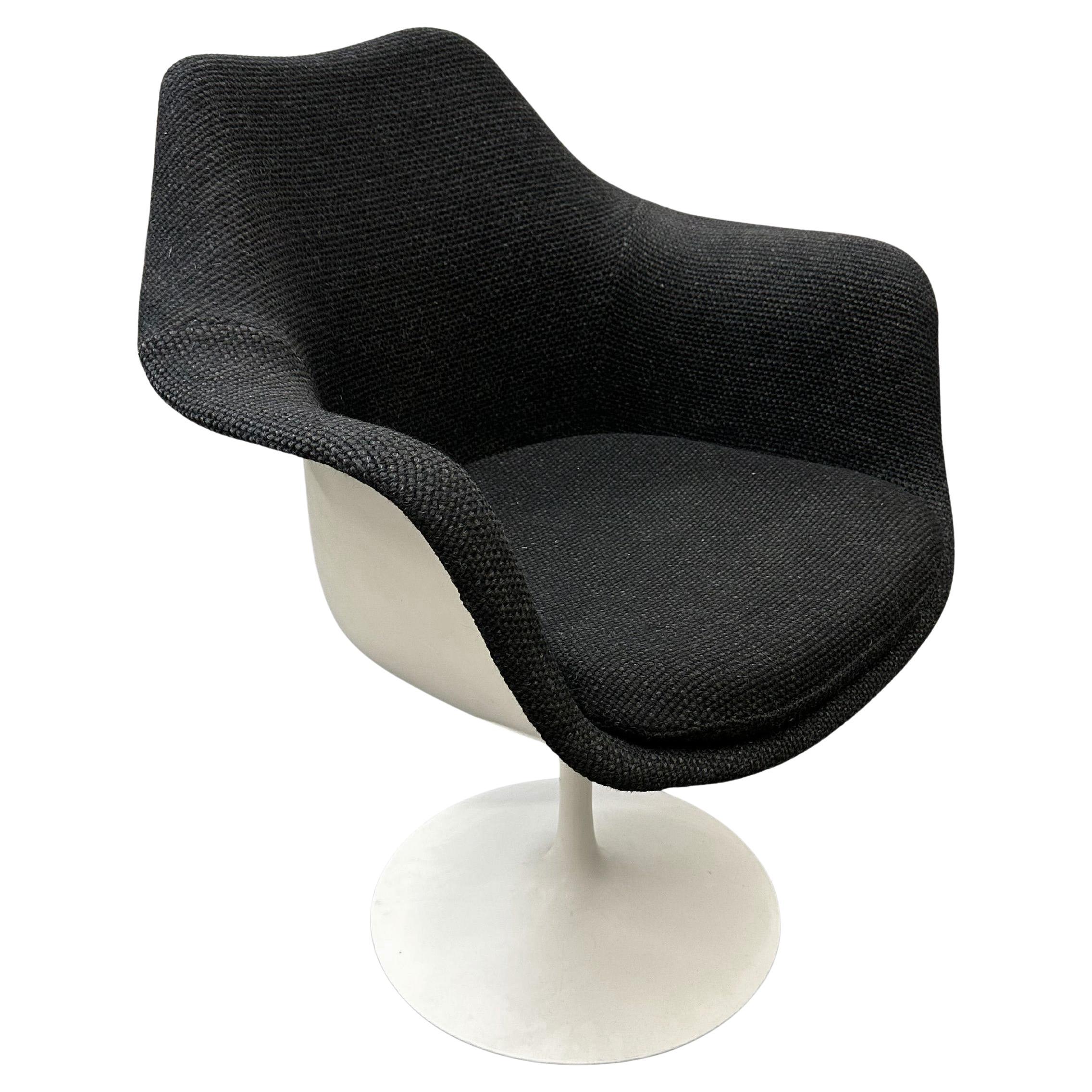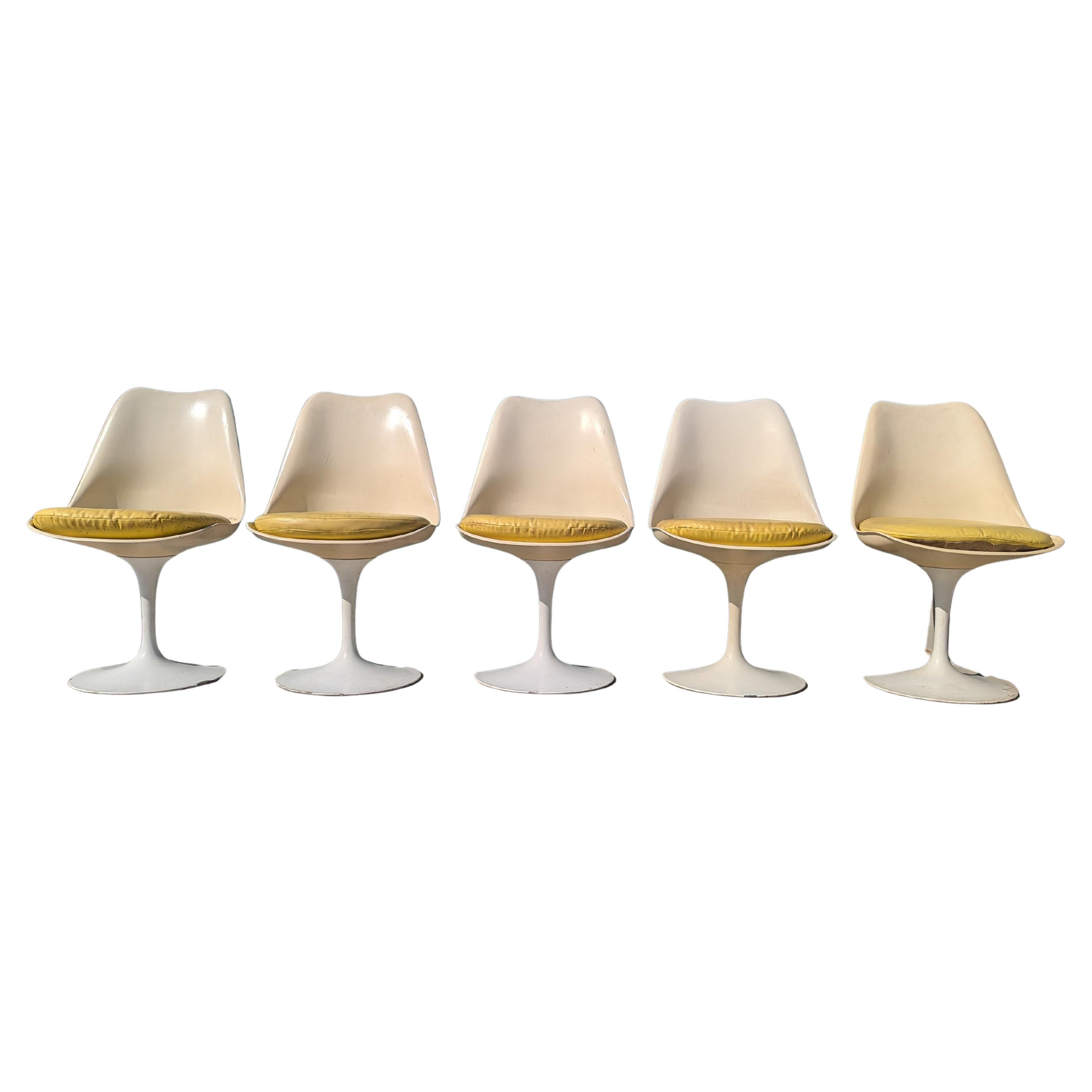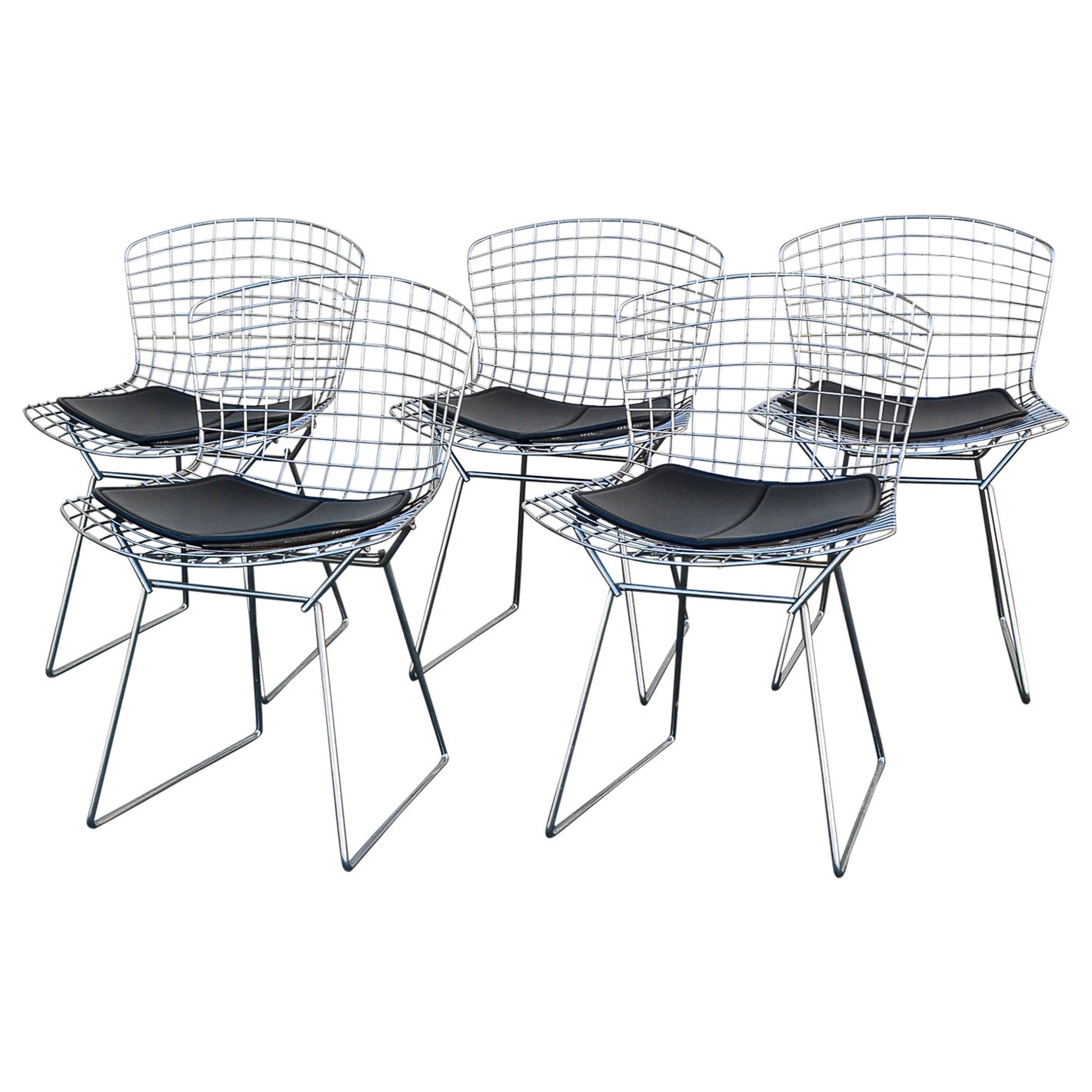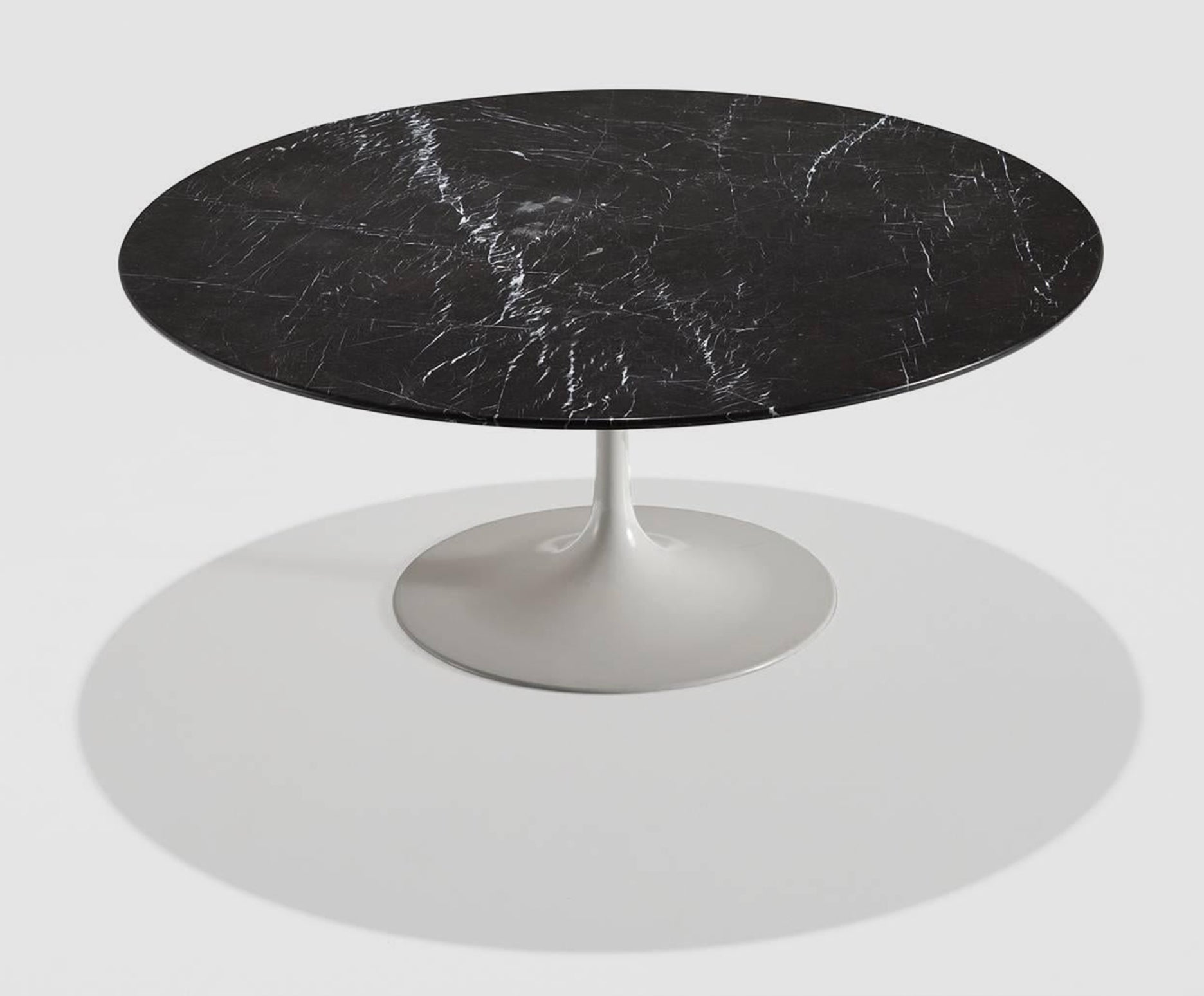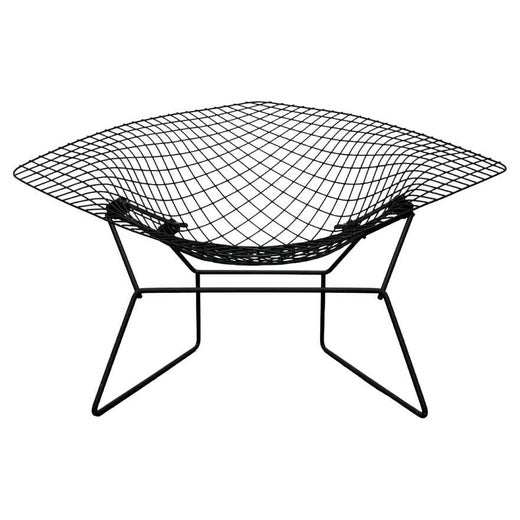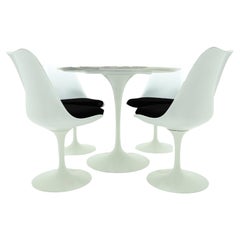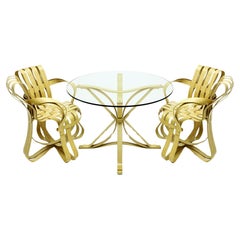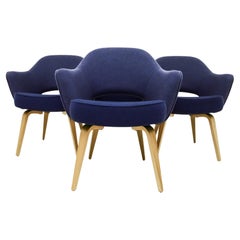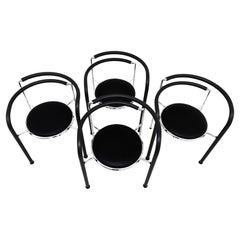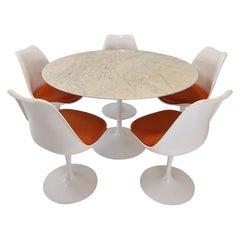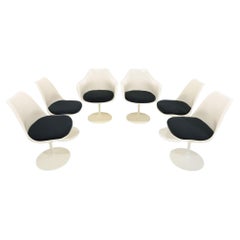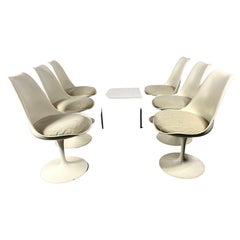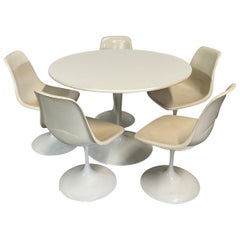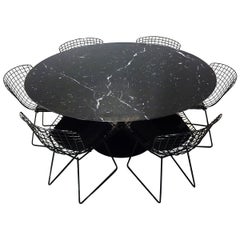
Original Eero Saarinen Black Marble Tulip Dining Table and Bertoia Wire Chairs
View Similar Items
Original Eero Saarinen Black Marble Tulip Dining Table and Bertoia Wire Chairs
About the Item
- Creator:
- Design:Saarinen Pedestal TableSaarinen Pedestal Series
- Dimensions:Height: 28.75 in (73 cm)Diameter: 59.85 in (152 cm)Seat Height: 17.72 in (45 cm)
- Sold As:Set of 7
- Style:Mid-Century Modern (Of the Period)
- Materials and Techniques:
- Place of Origin:
- Period:
- Date of Manufacture:1971
- Condition:Refinished. Wear consistent with age and use.
- Seller Location:Highclere, GB
- Reference Number:1stDibs: LU4278221953362
Pedestal Table
Finnish-American architect and furniture maker Eero Saarinen (1910–61) declared that he “wanted to clear up the slum of legs” crowded beneath tables. Enter his Pedestal collection, which Knoll launched in 1958. The collection included armchairs, stools and tables of various sizes all balanced on a single supporting leg.
Saarinen got his start in furniture as a student at Michigan’s Cranbrook Academy of Art, where his father, architect Eliel Saarinen, was director. Some of Eero’s earliest work was designing furniture for Kingswood, a Cranbrook school for girls that opened in 1931. The pieces included a table with four gathered legs in order to make room for both people and chairs’ legs.
At Cranbrook Academy, Saarinen met Florence Knoll, who would become a lifelong friend and professional partner, especially when she was leading the Knoll furniture company. He also met fellow designer Charles Eames, and — with support from Ray Eames — they created the molded plywood Organic chair, which placed first in the 1940 Organic Design in Home Furnishings competition organized by the Museum of Modern Art in New York. As with Saarinen’s future practice, the Organic chair was emblematic of a design approach that was informed by a consideration of the human body as well as the possibilities of new machine processes.
Although America’s involvement in World War II disrupted plans to manufacture the Organic chair, Saarinen continued to explore organic shapes in industrial design. His interest in using seamless plastic forms was clear with his Pedestal series, but the technology was not advanced enough for their stability. Instead, the Pedestal table and its accompanying Tulip armchairs and armless chairs comprised cast-aluminum bases. Each table, stool and chair was crafted with a single, tapered cylindrical leg that descends to a base that flares into a circle, giving the illusion of being one piece. Like his Gateway Arch in St. Louis, the series’ pieces appear to float, and although austere in silhouette, they reflect intense attention to engineering.
The Pedestal table was released with several additional options, including marble and wood veneer for its round and oval tops for dining, side and coffee tables. Because of their modest footprint on a room and streamlined design, these tables can harmonize with nearly any interior style. The design’s status as a mid-century modern classic has inspired numerous imitators, but Saarinen’s original Pedestal table — still manufactured by Knoll — maintains the grace and quality that distinguishes it from the rest.
Harry Bertoia
Sculptor, furniture and jewelry designer, graphic artist and metalsmith, Harry Bertoia was one of the great cross-disciplinarians of 20th-century art and design and a central figure in American mid-century modernism. Among furniture aficionados, Bertoia is known for his chairs such as the wire-lattice Diamond chair (and its variants such as the tall-backed Bird chair) designed for Knoll Inc. and first released in 1952.
As an artist, he is revered for a style that was his alone. Bertoia’s metal sculptures are by turns expressive and austere, powerful and subtle, intimate in scale and monumental. All embody a tension between the intricacy and precision of Bertoia’s forms and the raw strength of his materials: steel, brass, bronze and copper.
Fortune seemed to guide Bertoia’s artistic development. Born in northeastern Italy, Bertoia immigrated to the United States at age 15, joining an older brother in Detroit. He studied drawing and metalworking in the gifted student program at Cass Technical High School. Recognition led to awards that culminated, in 1937, in a teaching scholarship to attend the Cranbrook Academy of Art in suburban Bloomfield Hills, one of the great crucibles of modernism in America.
At Cranbrook, Bertoia made friendships — with architect Eero Saarinen, designers Charles and Ray Eames and Florence Schust Knoll and others — that shaped the course of his life. He taught metalworking at the school, and when materials rationing during World War II limited the availability of metals, Bertoia focused on jewelry design. He also experimented with monotype printmaking, and 19 of his earliest efforts were bought by the Guggenheim Museum.
In 1943, he left Cranbrook to work in California with the Eameses, helping them develop their now-famed plywood furniture. (Bertoia received scant credit.) Late in that decade, Florence and Hans Knoll persuaded him to move east and join Knoll Inc. His chairs became and remain perennial bestsellers. Royalties allowed Bertoia to devote himself full-time to metal sculpture, a medium he began to explore in earnest in 1947.
By the early 1950s Bertoia was receiving commissions for large-scale works from architects — the first came via Saarinen — as he refined his aesthetic vocabulary into two distinct skeins. One comprises his “sounding sculptures” — gongs and “Sonambient” groupings of rods that strike together and chime when touched by hand or by the wind. The other genre encompasses Bertoia’s naturalistic works: abstract sculptures that suggest bushes, flower petals, leaves, dandelions or sprays of grass.
As you will see on these pages, Harry Bertoia was truly unique; his art and designs manifest a wholly singular combination of delicacy and strength.
Find vintage Harry Bertoia sculptures, armchairs, benches and other furniture and art on 1stDibs.
More From This Seller
View AllVintage 1980s Italian Mid-Century Modern Dining Room Sets
Marble, Aluminum
1990s American Post-Modern Dining Room Sets
Glass, Beech
1990s American Mid-Century Modern Dining Room Chairs
Wool, Oak
Vintage 1980s Danish Post-Modern Dining Room Chairs
Chrome
Mid-20th Century Danish Mid-Century Modern Dining Room Chairs
Teak
Vintage 1960s Danish Mid-Century Modern Dining Room Chairs
Steel
You May Also Like
Vintage 1960s Italian Mid-Century Modern Dining Room Chairs
Carrara Marble, Metal
20th Century American Mid-Century Modern Dining Room Chairs
Metal
Vintage 1960s American Mid-Century Modern Dining Room Chairs
Aluminum
Vintage 1960s American Mid-Century Modern Dining Room Sets
Metal
Vintage 1960s American Mid-Century Modern Dining Room Chairs
Aluminum
Vintage 1960s American Mid-Century Modern Dining Room Sets
Carrara Marble, Aluminum
